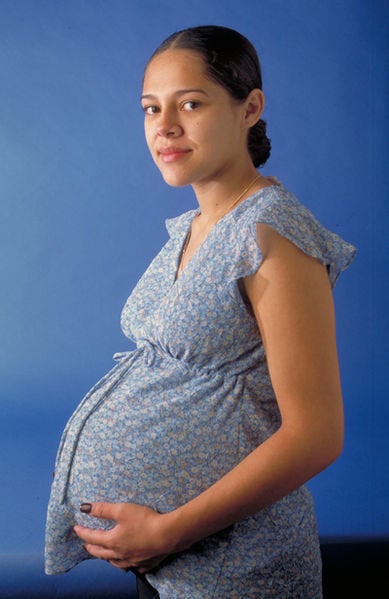
I think we Americans could take a few pages from the Norwegian playbook, especially when it comes to families.
When we went to visit my husband's family in Norway months ago, we got a good sense of what our life could be like if we lived there. We've long known the differences between the U.S. and Norway. For one, they've had wonderful universal healthcare for decades. In America, the average worker gets two weeks of vacation each year, and it's not abnormal for some to have to use their vacation days as sick days.
In Norway, employees generally get five weeks of vacation. From what I understand, sick leave seems a bit unlimited as long as you've got a doctor's note after four weeks and a treatment plan outlined. And yes, this includes needing time off to care for a sick family member.
Then there's the maternity leave. In the U.S., the Family Medical Leave Act allows for 12 weeks of unpaid leave. In Norway, you can generally receive up to 100 percent of your salary for 47 weeks, or 80 percent of it for 57 weeks. (As long as you're not some fat cat banker, pulling down millions upon millions of dollars each year.)
For paternity leave, dads generally get 12 paid weeks. That's three months people. Thu-reeeeee. And it's expected for you to take advantage of such leaves; if you don't, it can be frowned upon, because you clearly don't have your priorities straight.
Last week, the Save the Children foundation released its 13th annual State of the World's Mothers and it found Norway was the No. 1 country for moms. The U.S. came in 25th place. While an improvement from last year's 31st spot, we're still the lowest-ranked industrialized country. (You can view the report here.)
That's largely because moms here have a 1 in 2,100 risk of pregnancy-related death. (In Norway it's one in 7,600). Other factors that lower the U.S.'s placement include the fact that many kids aren't enrolled in preschools, women here have relatively low political status and we're one of the few countries in the world that doesn't guarantee working moms paid leave.
During our three weeks of Christmas vacation, we got to see those Norwegian numbers in action. One family that really made an impression on us was where the mom is a journalist, like me, and the father worked in a field similar to my husband's. They have three delightful, well-behaved boys. She took off 48 weeks with each of her kids and received 80% of her salary. With her youngest, she took an extra six months off with no pay. Today she works 80 percent, which means she works four days a week and due to constructs of her company, her work day is seven hours. Seven.
Her husband had two weeks paid off after all three kids were born, then with the two oldest he had an additional six weeks off. All paid. Plus he works 7 to 9 hours a day. Just for clarity's sake, this is all parental leave, it doesn't include holiday or sick leave. They keep that separate.
Oh, how envious we were!
I did have seven months maternity leave with both kids, with some of it paid, including use of my vacation. When I'd tell people the length of my leave, they'd always exclaim how lucky I was to be out of the workplace for so long. After my maternity leave with my oldest, I worked part-time for about four months and then returned full-time.
I was hoping to do the same with my second child, but my job denied my request to switch to part-time, so I had to quit. In Norway, that denial would have been illegal.
So now I'm freelancing and I like the freedom it allows, but it was scary venturing out on my own. It's kind of like starting your own business and I struggle with capping my hours at part-time so that I can be there for my family while keeping the career thing going.
My husband works 12 hours a day, five days a week and spends four or so hours each Sunday on work.
Seeing our Norwegian friends' lifestyle was eye-opening. They were still able to climb the ladder of success without sacrificing their families.
Not that they don't have their stresses and challenges, but this was more than a grass-is-greener-on-the-other-side revelation. It seemed like they have evolved to a higher mindset. Of course you must spend more time with your family because you work to live, not live to work. Anything different to them is backasswards.
When we returned to the states, it was interesting to contrast the daily life of the Norwegian journalist's family with the frenetic pace of my American mommy friends. Many married, stay-at-home moms feel like single moms, since their spouses are away so much. Then when both parents work, they're wracked by guilt that daycare and nannies get to see their children more. They worry about missing out on first smiles, first steps, first words, first crushes. Their marriages take a hit because after work and the kids, there's not much energy left for each other, making it easy to drift apart.
We're told we can do it all and have it all, but without a significant culture change, let's be honest, we can't. Sacrifices have to be made. Not that the Norwegians have it all, but they've got the infrastructure to be much more satisfied with the parental juggling act than Americans.
As people, our families and friends are our foundation. In the race to be bigger, faster, stronger, we've lost sight of what makes us better: Time with each other.
*First posted on http://sheswrite.net